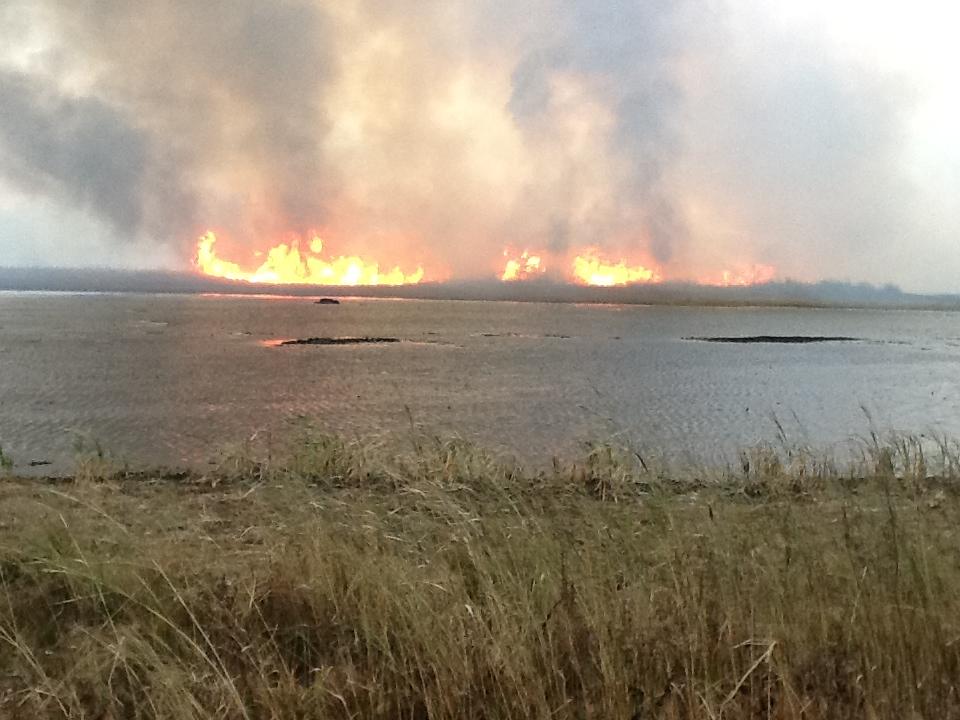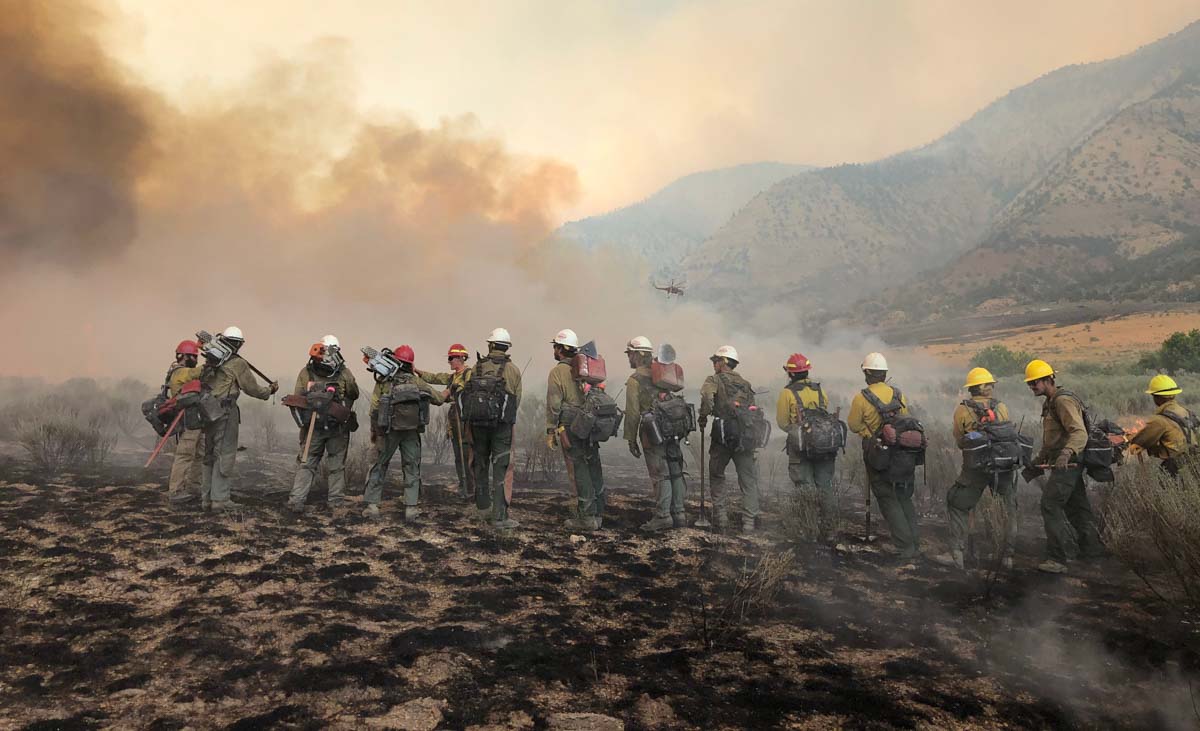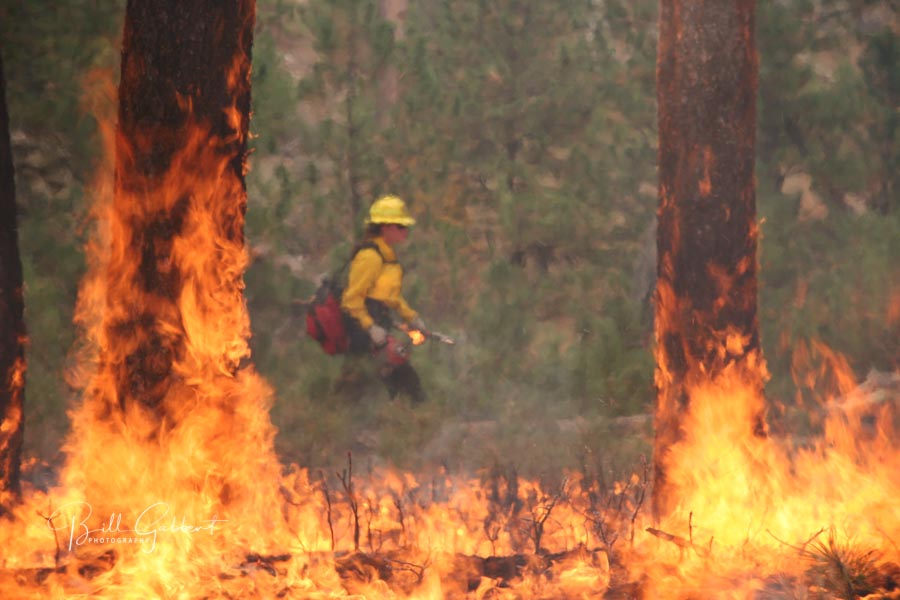
Spatiotemporal patterns of overwintering fire in Alaska
By Rebecca Scholten and Sander Veraverbeke
Vrije Universiteit Amsterdam
What are holdover and overwintering fires?
Fires can appear to be out, but retain smoldering combustion deep in the fuelbed and flare up again when the weather favors flaming behavior and fire spread. This phenomenon occurs not infrequently in boreal forests of North America, and presents a well-known challenge to firefighters. Over the last two decades, fire managers noted increasing occurrences where fires survive the cold and wet boreal winter months by smoldering, and re-emerged in the subsequent spring.
Scientists and managers seek better understanding of how these fires sustain during such unfavorable conditions. Fire managers have already started targeting locations where they expect fires to flare up again. However, they are missing detailed information on the environmental and climatic factors that facilitate these fires. This information is crucial to detect fires at an early stage and keep firefighting costs low. A research group at Vrije Universiteit Amsterdam is studying when and where these holdover fires emerge and how their occurrence is tied to specific geographic locations.
Mapping overwintering fires from satellite data
Since 2005, fire managers reported data on 39 holdover fires that survived winter in Alaska. However, the location and emergence date of these fires were used in conjunction with satellite data to develop an algorithm for overwintering holdover detection. From satellite imagery, we can only observe fires that are large enough to generate a considerable amount of heat and burn a large enough area. Consequently, 32 out of 39 reported overwintering fires were too small (all smaller than 11 ha, 25 out of 32 smaller than 1 ha) to be detected from space. The location and emergence date of these small overwintering fires were used for the calibration of an algorithm focused on large overwintering fires. From the remaining seven large reported overwintering fires, our algorithm classified 6 out of 7 as overwintering fire. In addition, our approach revealed 9 large overwintering fires that were not reported by agencies between 2002 and 2018 in Alaska. A results paper is currently in preparation.
The spread rate of smoldering fires is known to be very low, and a smoldering fire would spread only between 100 and 250 m in an entire year (Rein, 2013). So, overwintered fires usually emerge within or close to the previous year fire (Fig.1) and can re-emerge with flaming behavior as soon as favorable burning conditions appear in spring develop in to flaming forest fires before the major lightning-induced fire season. The onset of warm and dry conditions varies from year to year depending on the winter and spring temperatures and precipitation. These variables also shape the regional snowmelt day, which can be inferred from satellite observations. Indeed, our research indicates that holdover fires usually re-emerge within 50 days after the regional snowmelt. Overwintering fires are more likely to occur the year after a large fire
year (Fig. 2).

overwintering flare-ups (orange bars) than years with less burned area. Rebecca Scholten and Sander Veraverbeke.
Can we predict where overwintering may re-emerge?
It is not only important to know when these fires emerge, but also where. We therefore analyzed spatial drivers of the overwintering fires we detected. Our research indicates that holdover fires are facilitated in those regions of a fire perimeter that had burned deeper into the organic soil the year before. Deep burning is a characteristic of a high severity fire. We also observed that overwintering fires were more likely to emerge in lowland areas with black spruce-dominated forest. Overwintering fires thus have some temporal and spatial predictability. Monitoring the edges of fire perimeters from the preceding year in lowland forested peatlands early in the fire season, and especially after a year with large burned area, may prove beneficial to extinguish flare-ups from overwintering fires before they develop into a large flaming forest fire. This could be a cost-efficient strategy for fire management agencies. In addition, this would preserve terrestrial carbon by safeguarding it from combustion.
This article is from the Alaska Fire Science Consortium’s Fire Science Highlights.







